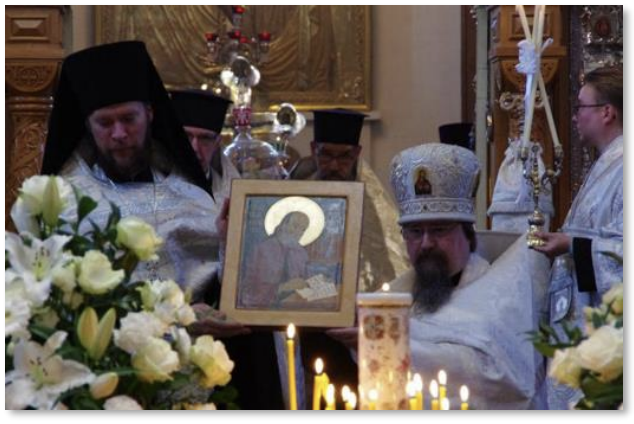Local Saints
The process whereby certain Christians are chosen by the Church to become “Saints” (with a capital “S”) is known as glorification or canonization. The process has varied over time. Sanctity is self-authenticating, so that people know true holiness when they experience it. For this reason, the saints of the earliest days of the Church did not need to undergo an “official” process of ecclesiastical investigation and canonization. The Church knew that Peter, Paul, and the other apostles were Saints without any such process.
It was the same for the saints who died for their faith. The celebrations of their deaths were local affairs, with usually only the local church commemorating the martyrdom of their members. Thus, the Church in Smyrna would keep the feast of the martyrdom of their bishop Polycarp (d. 155 A.D.), while the Church in Thessalonica would not necessarily do so. Rather, the Thessalonians kept the feasts of their own local martyrs.
Thus, in the earliest years of the Church’s life, there was no single universal calendar. Rather, each church kept the common calendar, containing feasts such as Pascha and Pentecost, and added to it local variations for their own martyrs. Often the Christians of the local church would meet at the grave of their martyrs to read the story of their final contest and to celebrate the Eucharist over their relics. The holiness of the martyrs, in particular, and their status as those who dwelt with Christ in heaven, were never in doubt, so they were regarded as “capital ‘S’ saints” as soon as they were martyred.
Universal Veneration of Local Saints
Eventually, as the Church’s rise to Byzantine power necessitated greater cooperation and coordination between the local churches, the feast of one local church’s martyr would be celebrated in neighbouring churches as well, so that the cult of a local martyr grew and spread to other churches and locations. Regular meetings of bishops in a particular region helped to bring about this coordination. The creation of a universal calendar of saints and church feasts (including a universally agreed upon date for celebrating Pascha1) became pastorally necessary, so if one church celebrated its martyr’s feast, other churches would as well.

The process of canonization then became more formal. To canonize someone, the bishops of an autocephalous church meet in synod to agree upon the canonization of a saint and to put the Church’s seal on their alreadyexisting veneration. In doing this, the bishops are not “making” the person a saint, but simply recognizing their sanctity and declaring to their faithful that this person is indeed holy, is in heaven, is worthy of imitation, and that their prayers can be invoked liturgically. The saint then officially has his or her own feast day, liturgical prayers dedicated to him or her2, and can be the subject on an icon.3 The bishops, therefore, in their act of canonization, simply respond to the groundswell of support and devotion already present among the faithful.
These acts of canonization are still local in character in that it is the task of the synod of bishops of an autocephalous church to undertake such canonization—usually the bishops who have possession of the saint’s relics. Thus, for example, St. Herman of Alaska, although he was Russian and part of the Russian Church, was canonized by the autocephalous Orthodox Church in America because it was this autocephalous church which possessed his relics in Alaska. On the other hand, the canonization of St. Patriarch Tikhon, although he was the first bishop of the American diocese (later The Orthodox Church in America), was canonized by the Russian Church because he was in Russia when he died. Thus, the Russian Church retained possession of his relics.
The decrees of one autocephalous church concerning its newly canonized saints do not have canonical power outside of that church. The fact that Herman of Alaska is recognized as a saint by the Orthodox Church in America cannot compel (for example) the autocephalous Church of Greece to recognize him as a saint. To this degree, the canonizations remain local affairs. But given the unity of the autocephalous churches, the canonizations of one church are recognized by the others—not by force of canonical law, but because in general, all the churches can recognize a saint when they see one.
Footnotes
-
Some local churches in Asia preferred to celebrate Pascha always on the 14th of Nisan, which did not always fall on a Sunday. ↩
-
Including their own troparion, kontakion, verses for the “Lord I call,” for the canon of Matins, and the Praises. ↩
-
It is probable that icons of certain saints had informally appeared before the official canonization. ↩